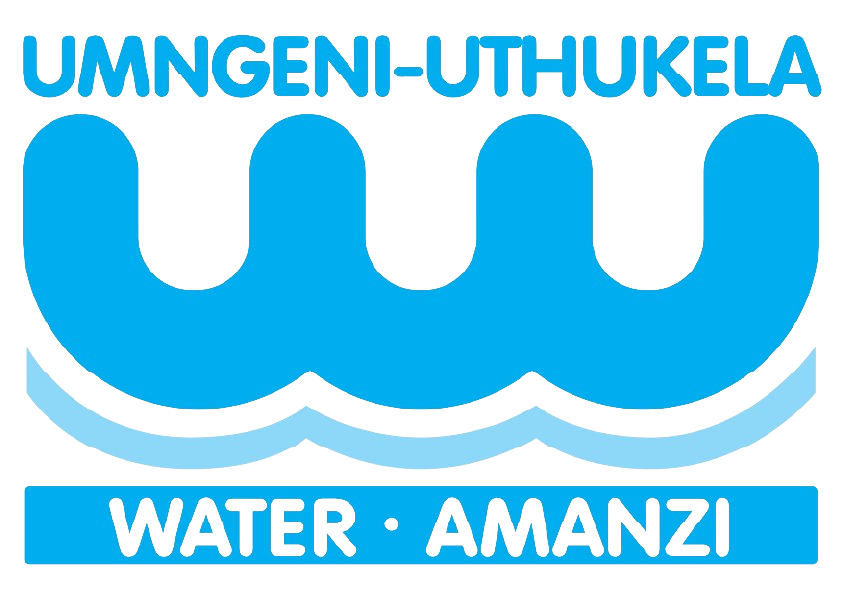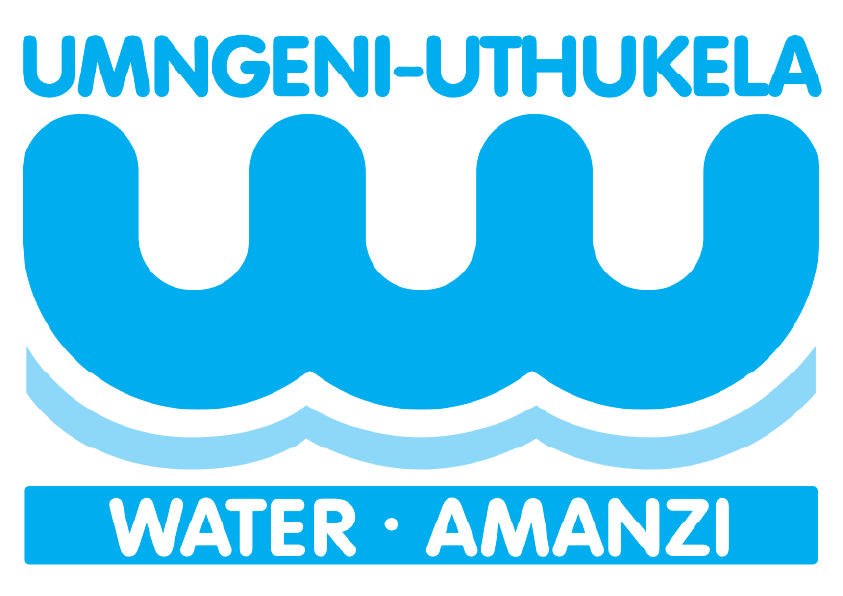NOTICE OF CANCELLATION OF TENDERS – 16 April 2025
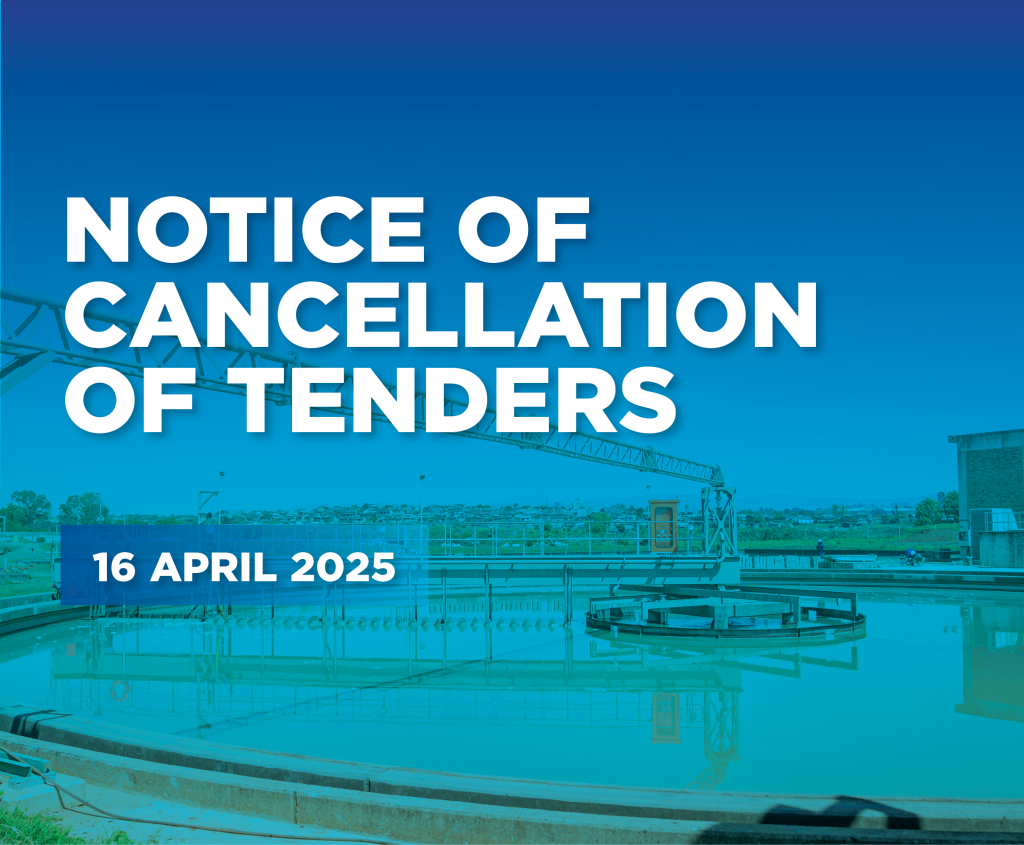
uMngeni-uThukela Water would like to inform you of the cancellation of the following tenders: 2024/147 APPOINTMENT OF AN ENVIRONMENTAL ASSESSMENT PRACTIONER – HENLY DAM IMPACT ASSESSMENT STUDY 2025/012 APPOINTMENT OF A SERVICE PROVIDER TO IMPLEMENT THE BAYNESPRUIT WETLAND REHABILITATION INTERVENTIONS 2025/032 APPOINTMENT OF A REHABILITATION SPECIALIST FOR THE PROPOSED DARVIL CONSTRUCTED WETLAND 2024/101 PROVISION OF […]
Invitation For Enterprise and Supplier Development Database for Professional Service – Closing date: 30 April 2025
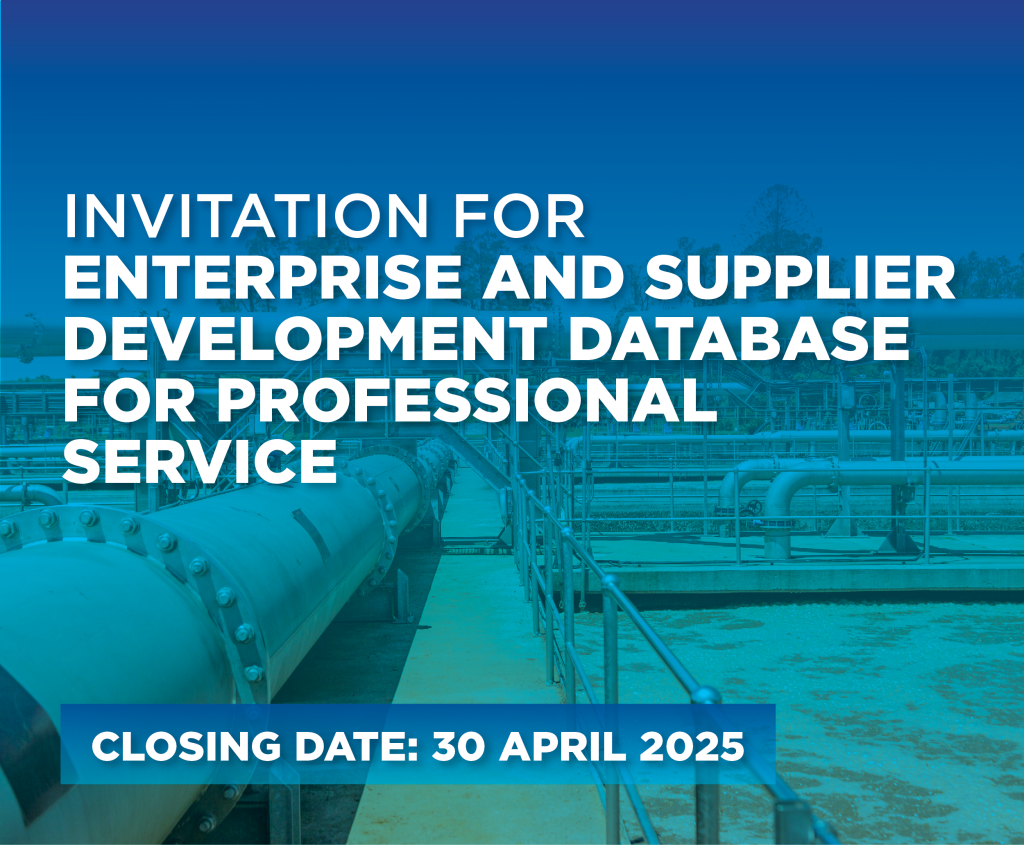
uMngeni-uThukela Water is establishing an Enterprise and Supplier Development database for Professional Services. Enterprises that are rendering multi-disciplinary Professional Engineering Services in the Chemical, Civil, Structural, Electrical, Mechanical, Project, and Construction Management services are invited to participate in the enterprise and supplier Development programmes for 3 years. ESD Database Form Chemical ESD Database Form Civil […]
uMngeni-uThukela Water’s Enterprise & Supplier Development Database
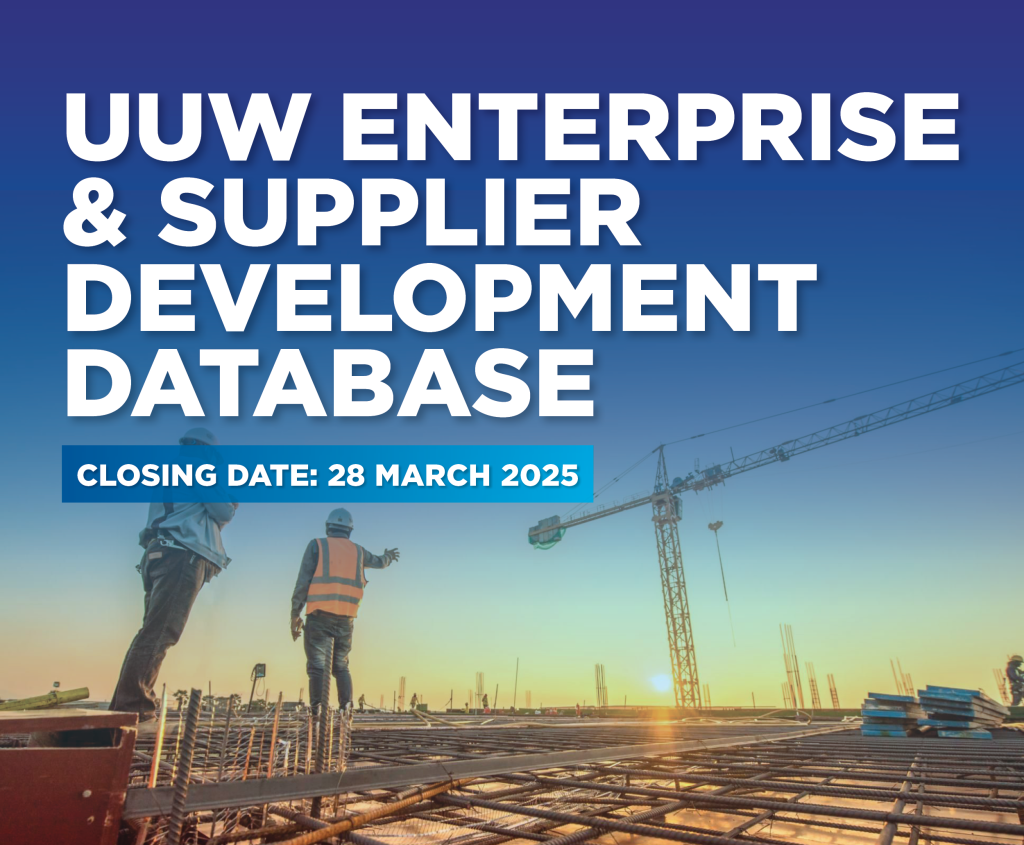
uMngeni-uThukela Water is establishing an Enterprise and Supplier Development programme to facilitate the constructive and meaningful participation by the designated groups in Local Economic Development within Kwa-Zulu Natal. uMngeni-uThukela Water is calling for Black owned Enterprises in its area of Operation (eThekwini Metro, Msunduzi Local Municipality, uMgungundlovu District Municipality, iLembe District Municipality, Ugu District Municipality, […]
Public Notice: REDUCTION OF WATER SUPPLY TO PARTS OF THE UGU DISTRICT FROM MTHWALUME WATER TREATMENT WORKS
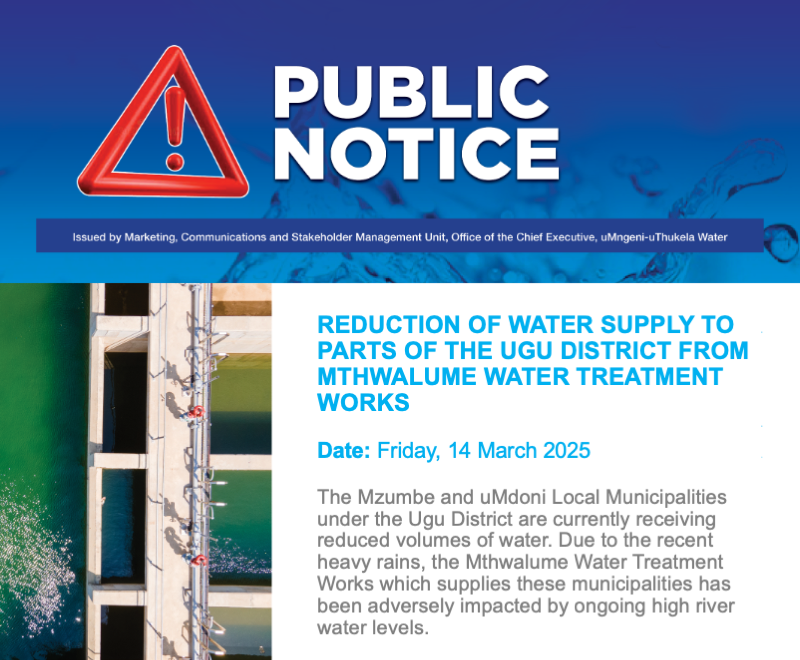
Friday, 14 March 2025 The Mzumbe and uMdoni Local Municipalities under the Ugu District are currently receiving reduced volumes of water. Due to the recent heavy rains, the Mthwalume Water Treatment Works which supplies these municipalities has been adversely impacted by ongoing high river water levels. As a result, the abstraction system which draws water […]
MEDIA AND PUBLIC STATEMENT – COMPLETION OF WORK ON 53 PIPELINE DELAYED BY RAINY WEATHER
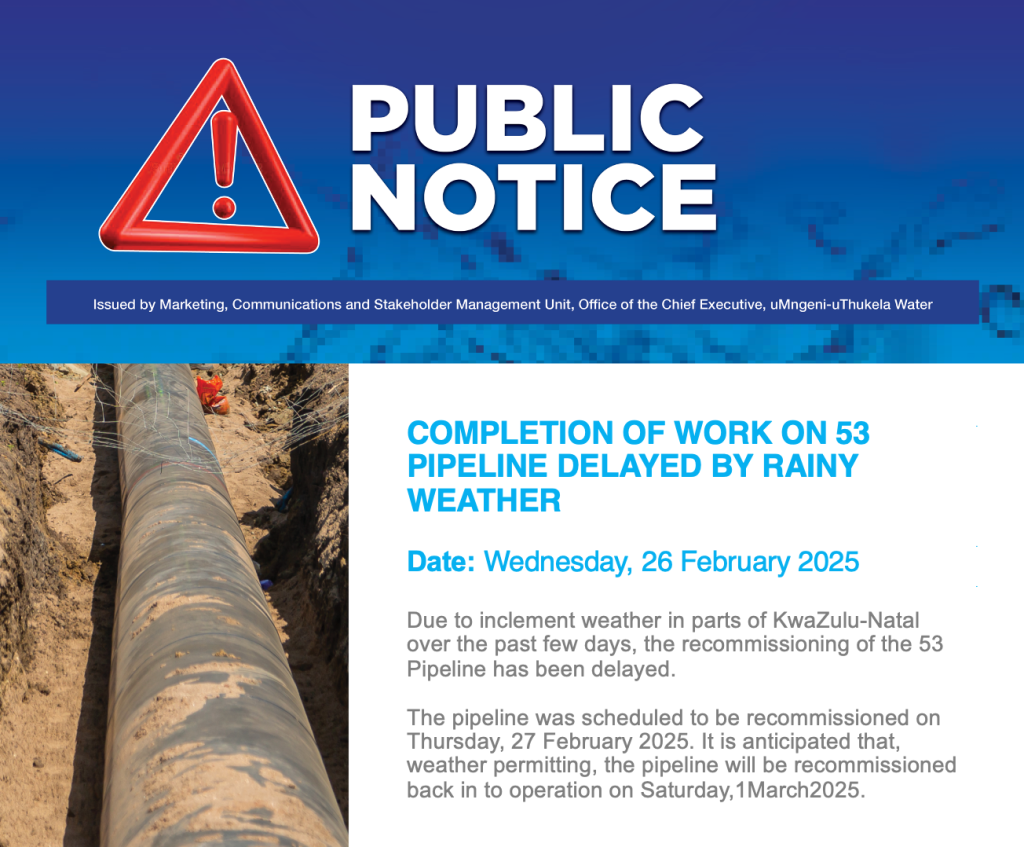
Wednesday, 26 February 2025 Due to inclement weather in parts of KwaZulu-Natal over the past few days, the recommissioning of the 53 Pipeline has been delayed. The pipeline was scheduled to be recommissioned on Thursday, 27 February 2025. It is anticipated that, weather permitting, the pipeline will be recommissioned back into operation on Saturday, 1 […]
Request for Information (RFI) – Suppliers & Service Providers
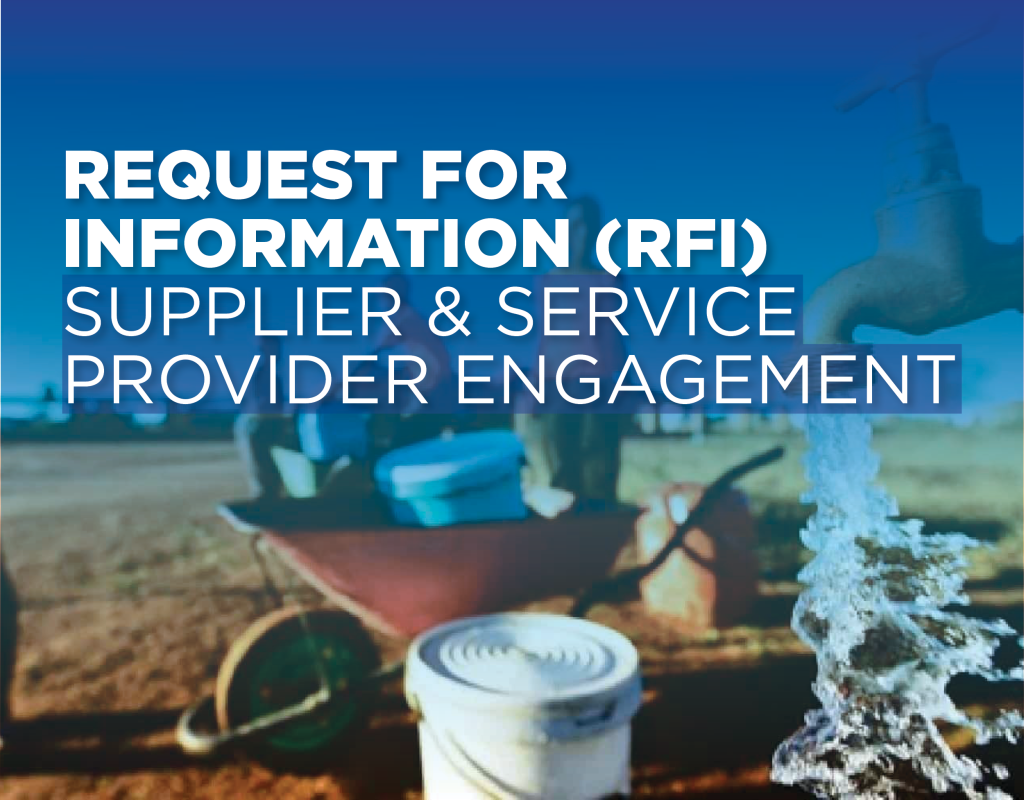
uMngeni-uThukela Water is requesting information from manufactures/developers or approved sole–exclusive suppliers/distributors/service providers to supply the below listed requirements and unlisted similar requirements. uMngeni-uThukela will assess the RFI responses received and use the outcome to determine RFT or RFP or RFQ with the suitably qualified respondents. It should be noted that this is an RFI only, […]
Media and public statement – Lower Thukela Bulk Water Supply Update
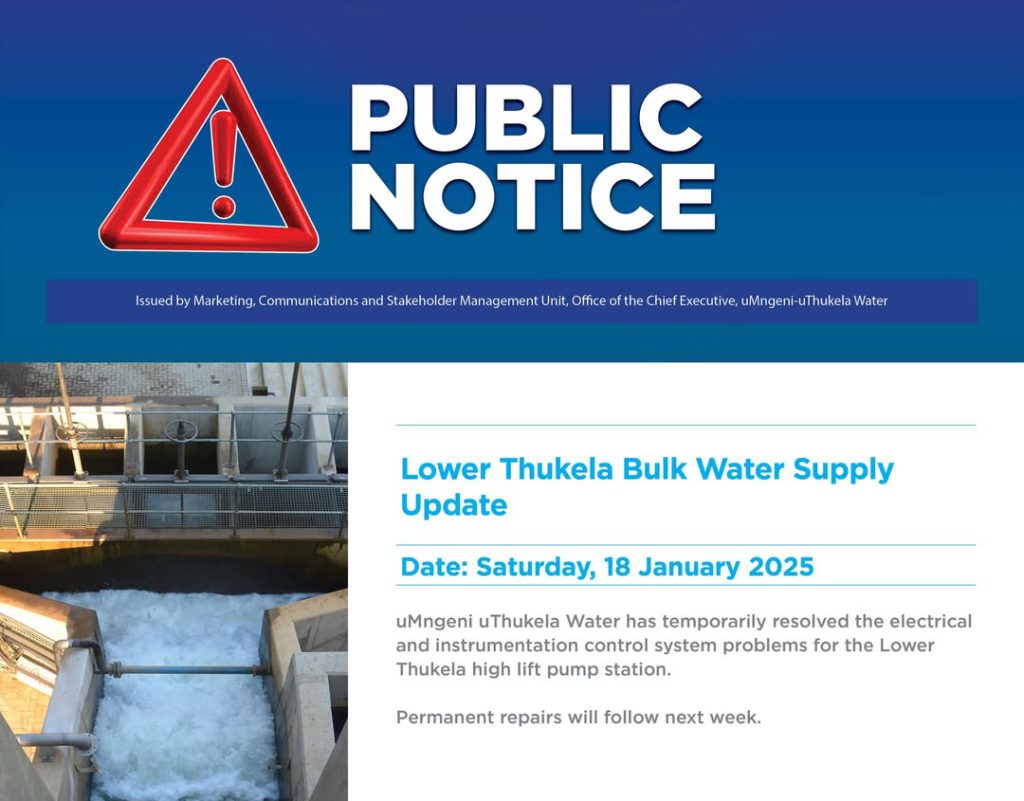
Saturday, 18 January 2025 uMngeni uThukela Water has temporarily resolved the electrical and instrumentation control system problems for the Lower Thukela high lift pump station. Permanent repairs will follow next week. The break down had affected the supply of water to the Ilembe District. The storage of the Lower Thukela command reservoir has since recovered […]
MEDIA AND PUBLIC NOTICE – EMERGENCY WATER SUPPLY INTERRUPTION FROM LOWER THUKELA WATER TREATMENT WORKS
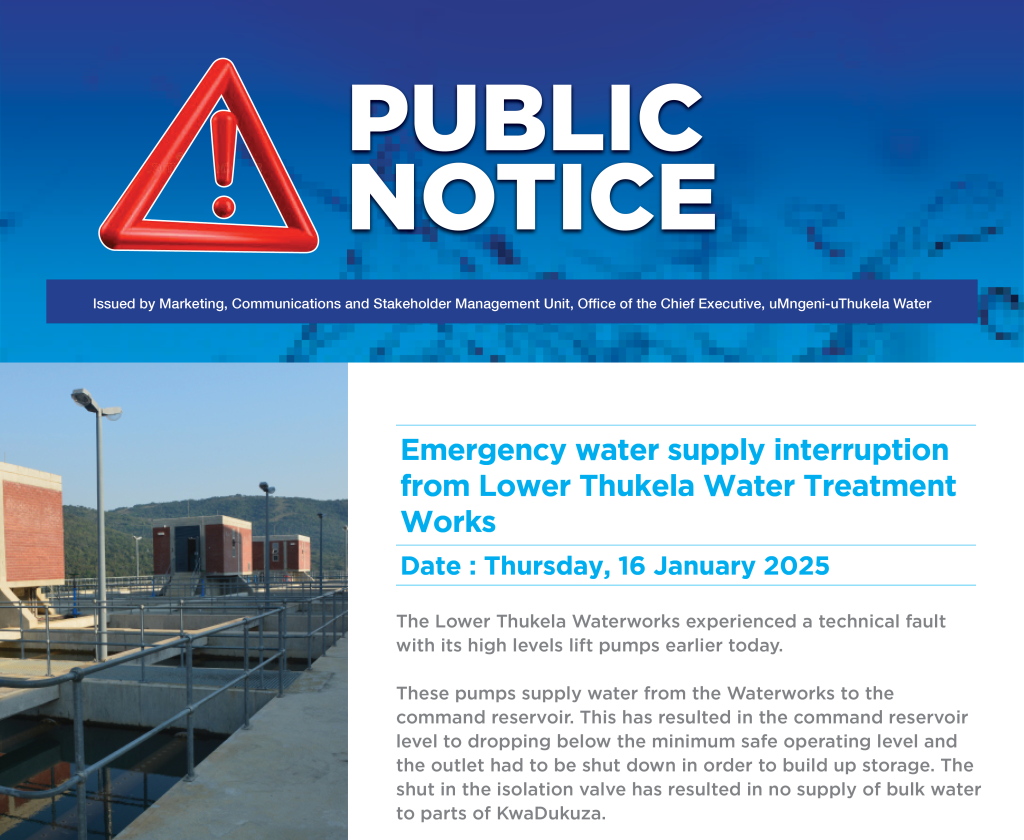
Wednesday, 15 January 2025 The Lower Thukela Waterworks experienced a technical fault with its high levels lift pumps earlier today. These pumps supply water from the Waterworks to the command reservoir. This has resulted in the command reservoir level to dropping below the minimum safe operating level and the outlet had to be shut down […]
NOTICE – PLANNED WATER SUPPLY INTERRUPTION FROM LOWER THUKELA WATERWORKS
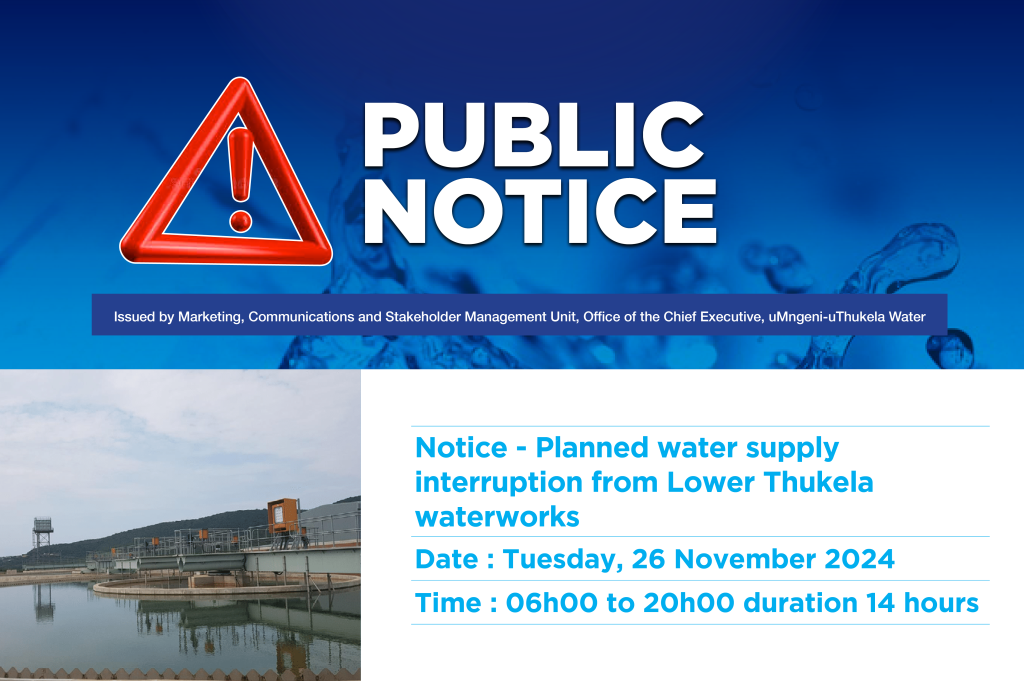
Notice of Supply Interruption from the Lower Thukela Waterworks to KwaDukuza to replace isolation valve Date: Tuesday, 26 November 2024 Time: 06h00 to 20h00 duration 14 hours. UUW has a planned shutdown to remove and replace the malfunctioning on line isolation valve Number 3, three (3)x Scour Valves and eight (8)x Air Valves The following areas […]
PUBLIC NOTICE – PLANNED WATER SUPPLY INTERRUPTION FROM LOWER THUKELA WATERWORKS
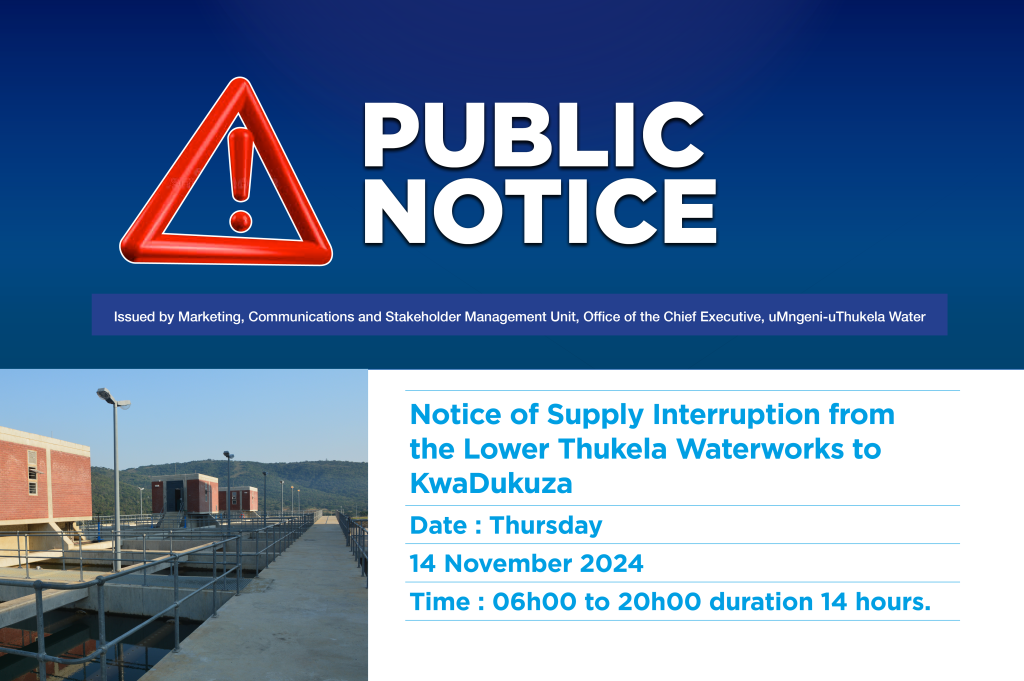
Notice of Supply Interruption from the Lower Thukela Waterworks to KwaDukuza Date: Thursday, 14 November 2024 Time: 06h00 to 20h00 duration 14 hours. uMngeni-uThukela Water has a planned shutdown to replace the malfunctioning isolation valve and to scour valves at its Lower uThukela Water Works. The following areas will be affected by the water supply […]
